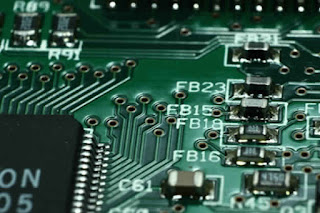The difference between vision sensors and vision systems is fairly basic:
A vision sensor does simple inspections like answering a simple yes-no question on a production line. A vision system does something complex like helping a robot arm weld parts together in an automated factory.
Machine vision sensors capture light waves from a camera’s lens and work together with digital signal processors (DSPs) to translate light data into pixels that generate digital images. Software analyzes pixel patterns to reveal critical facts about the object being photographed.
A vision sensor does simple inspections like answering a simple yes-no question on a production line. A vision system does something complex like helping a robot arm weld parts together in an automated factory.
Machine vision sensors capture light waves from a camera’s lens and work together with digital signal processors (DSPs) to translate light data into pixels that generate digital images. Software analyzes pixel patterns to reveal critical facts about the object being photographed.
Automated production doesn’t have to mean robots building pickup trucks and smartphones. Many automated factory tasks require simple, straightforward kinds of vision sensor data:
- Presence or absence. Is there a part within the sensor’s field of view? If the sensor answers yes, then machine vision software gives the OK to move the part to its correct place in the production process.
- Inspection. Is the part damaged or flawed? If the sensor sees defects, then the part gets routed out of production.
- Optical character recognition (OCR). Does the part contain specific words or text? Answering this question can help automated systems sort products by brand name or product description.
Cognex machine vision systems use multiple sensors to perform all of these basic tasks plus many more complicated challenges:
- Guides/alignment: When parts require an exact position or alignment, vision systems use sensors to identify the correct parts and place them exactly where they need to go.
- Code reading: Codes on packages and individual components contain vital data that vision systems acquire in real time to sort finished goods and differentiate between parts within a production process.
- Gauges/measurement: Sensors can ensure that machined parts are cut to the proper dimensions.
- 3D imaging: Sensors create three-dimensional representations of parts and products. These images can help automate inspections and tell robotic arms where to pick up and place parts.
Every company has to decide whether they need simple vision sensors or more advanced vision systems. Vision sensors are designed to be easy to install and implement, so factory personnel typically can set them up and configure them without a lot of outside assistance. When the imaging job requires a simple go/no-go decision, vision sensors may be all the company needs.
Vision systems, by contrast, require more expertise and a significant investment of time and money for configuration, installment and training. Often, companies turn to third-party integrators who have deep expertise in vision system installations.
Every company in the machine vision sector has its own way of defining the difference between machine vision sensors and systems. Cognex, for instance, builds vision sensors that perform specific kinds of tasks, like quality control in food processing. Our vision systems combine advanced software with industrial-strength cameras to enable a broad spectrum of factory automation applications.
One way to distinguish between vision systems and sensors is to imagine hundreds of beer bottles on a conveyor belt in a bottling plant. A vision sensor can make sure every bottle has a cap. If the cap is there, then the bottle gets approved and sent to packaging, where another sensor makes sure every six-pack has six bottles.
But the bottling company may want to identify when a bottle cap is skewed past a certain angle. Or, perhaps they want to ensure that the six-pack doesn’t accidentally mix multiple beer varieties. That’s more likely to require a vision system.
Vision systems, by contrast, require more expertise and a significant investment of time and money for configuration, installment and training. Often, companies turn to third-party integrators who have deep expertise in vision system installations.
Every company in the machine vision sector has its own way of defining the difference between machine vision sensors and systems. Cognex, for instance, builds vision sensors that perform specific kinds of tasks, like quality control in food processing. Our vision systems combine advanced software with industrial-strength cameras to enable a broad spectrum of factory automation applications.
One way to distinguish between vision systems and sensors is to imagine hundreds of beer bottles on a conveyor belt in a bottling plant. A vision sensor can make sure every bottle has a cap. If the cap is there, then the bottle gets approved and sent to packaging, where another sensor makes sure every six-pack has six bottles.
But the bottling company may want to identify when a bottle cap is skewed past a certain angle. Or, perhaps they want to ensure that the six-pack doesn’t accidentally mix multiple beer varieties. That’s more likely to require a vision system.







